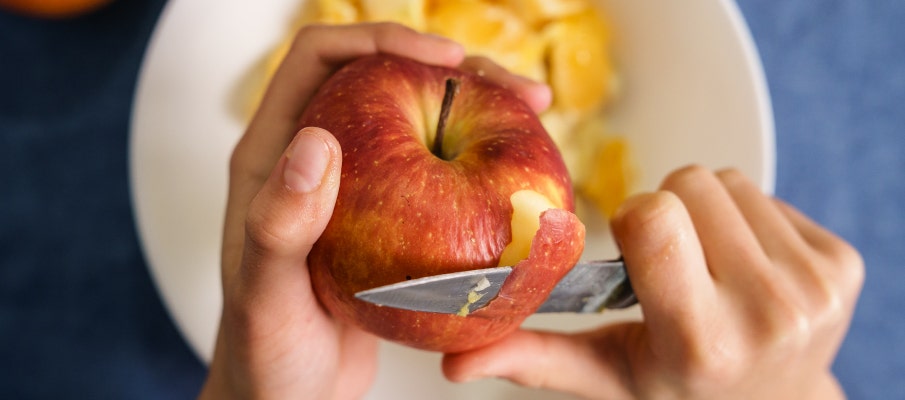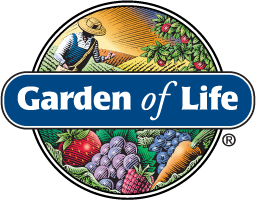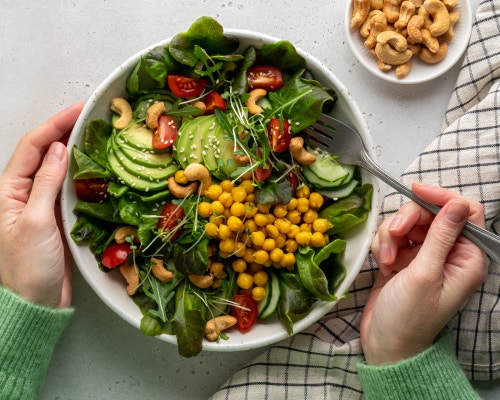To Peel or Not to Peel: Exploring the Safety and Benefits of Eating Fruit and Vegetable Peels
- 9/30/24


As fall rolls in, our plates are filled with an abundance of apples, carrots, and various tubers. But what about the peels? Are they safe to eat, especially with wax coatings? Are there any considerations regarding other coatings? Let’s dive into the world of fruit and vegetable peels, exploring their safety, potential concerns, and the benefits they offer.
Peels Safe to Consume
When it comes to fruit peels, it is generally safe to eat the peels of many fruits and vegetables, as they often contain beneficial nutrients and fiber. However, it's important to note that some fruits may have wax coatings applied to enhance their appearance and extend shelf life. While these wax coatings are considered safe for consumption, it's recommended to wash and scrub the fruit thoroughly before eating the peel. Here are a few fruits and veggies with edible peels:
- Apples: Apple’s easy accessibility and firm structure that can hold up in a bag or purse makes it a go-to fruit for any snack. Generally, those who are consuming apples due to easy accessibility, are generally not peeling the fruit before consuming it, which can be the better and more nutritious choice! Apple peels have been found to have potent antioxidant activity and up to 2-3 times more flavonoids in the peels than in the apple flesh (1). Additionally, the peels of the apples contain a dietary fiber called pectin, which can help support digestive health.
- Potatoes: Leaving the skin on the potato can hugely depend on the dish that is being prepared or the preference of the consumer. However, peeling the potatoes can put you at a disadvantage when it comes to the nutritional benefits they offer. Similarly to apples, higher antioxidant activity, such as vitamin C, can be found in the potato skins than the flesh itself (2). Vitamin C is an antioxidant that helps produce collagen, which is essential for maintaining skin health. Not to mention, potato skins contain more than half of the dietary fiber in the skin than in the potato flesh itself. Although potatoes do not generally have a wax coating, it is important to remember that potatoes are grown in the ground so washing and cleaning potatoes thoroughly is recommended.
- Carrots: Some people would consider carrot peels to be a bit tougher in texture and may describe them to be more bitter, while others may not notice the difference. Due to this, peeling carrots can come down to personal preference. But what’s the more nutritious choice? It has been observed that unpeeled carrots contain higher levels of phenols and carotenoids (3) and slightly more fiber compared to peeled carrots.
Peels to think twice before eating
As mentioned, it is generally safe to consume the peel or skin of fruits or vegetables, even if they contain a wax coating. But what are some other things to consider? It mainly comes down to the digestibility of the peel. For example, some fruits contain peels that are bitter to the taste but can be used effectively with some careful manipulation. For example, the peels of lemons or oranges are loaded with antioxidants but are quite bitter in taste when eaten whole but tasty when zested. On the other hand, there are some peels or rinds that are tough and hard to chew, making it unpleasant and risky when trying to eat it. Here are some examples:
- Pineapples
- Melons
- Pomegranates
- Avocados
- Onions
Additionally, the peel of some tropical fruits like mangoes or papayas may cause irritation when exposed to the skin for some people who are allergic. So, if you are wavering on the decision to peel or not to peel, consider these factors: the need to fill nutrient gaps, current health status, dietary fiber needs, but most importantly, your personal preference in the taste or texture. Alternatively, Garden of Life offers a Raw Organic Fiber that provides 9g of fiber, 15 raw organic superfoods, omega-3 fatty acids from flax and chia seeds, and is free of psyllium, fillers, artificial sweeteners, and preservatives.
As we savor the flavors of fall’s bountiful produce, it is important to consider the potential benefits and safety of fruit and vegetable peels. While some peels can be enjoyed for their nutritional value, others may be best left aside. Remember to wash and scrub produce thoroughly before consumption and embrace the goodness that peels can offer, reduce food waste, and discover new ways to incorporate these often-overlooked treasures into your culinary adventures. Happy peeling and happy eating this fall season!
References
- Boyer, J., & Liu, R. H. (2004, May 12). Apple phytochemicals and their health benefits. Nutrition journal. https://www.ncbi.nlm.nih.gov/pmc/articles/PMC442131/
- Hidayat, W., Sufiawati, I., Satari, M. H., Lesmana, R., & Ichwan, S. (2024, February 3). Pharmacological activity of chemical compounds of potato peel waste (solanum tuberosum L.) in vitro: A scoping review. Journal of experimental pharmacology. https://www.ncbi.nlm.nih.gov/pmc/articles/PMC10849911/
- Peeling affects the nutritional properties of carrot genotypes. (n.d.). https://www.researchgate.net/publication/357321842_Peeling_Affects_the_Nutritional_Properties_of_Carrot_Genotypes





